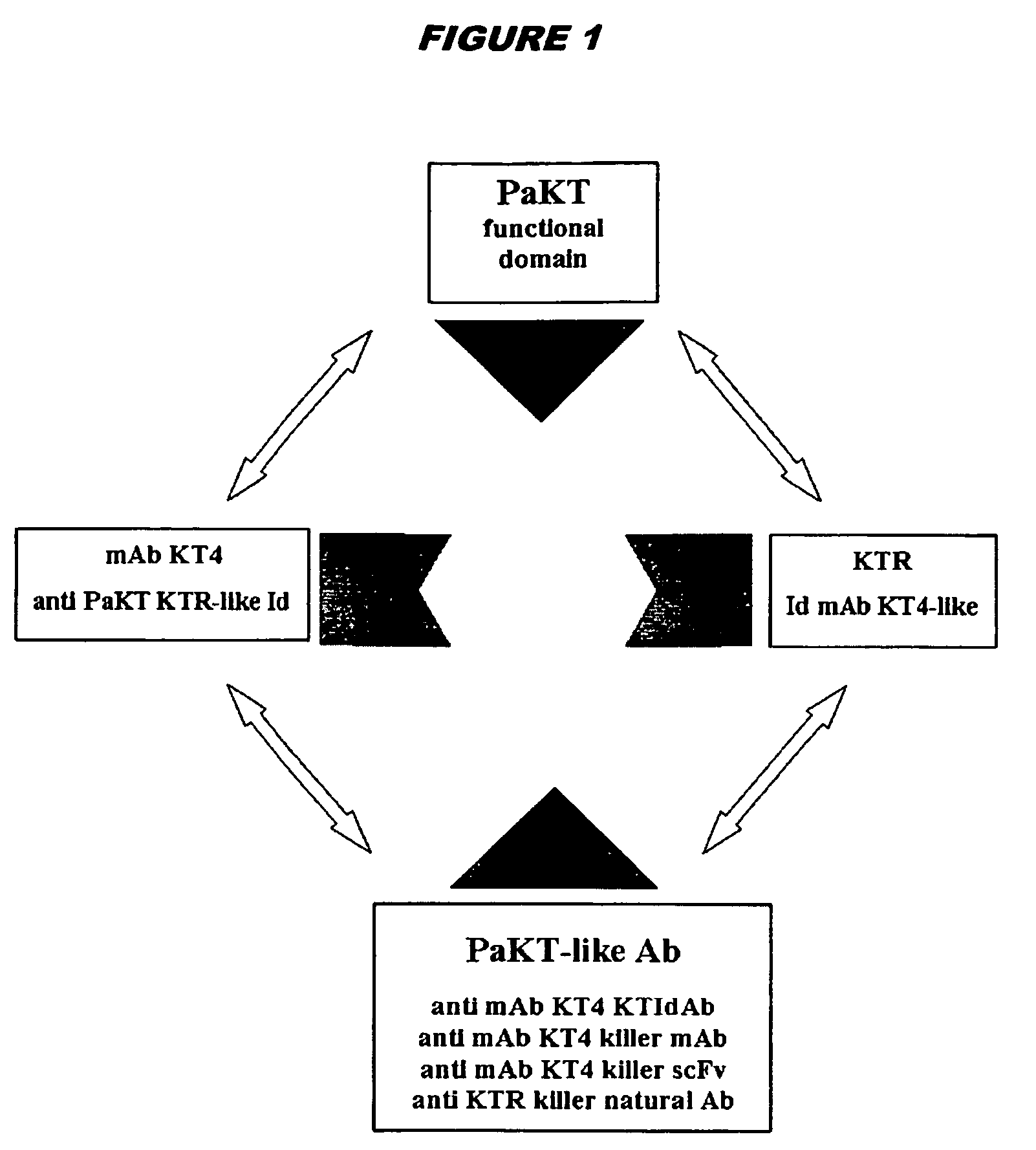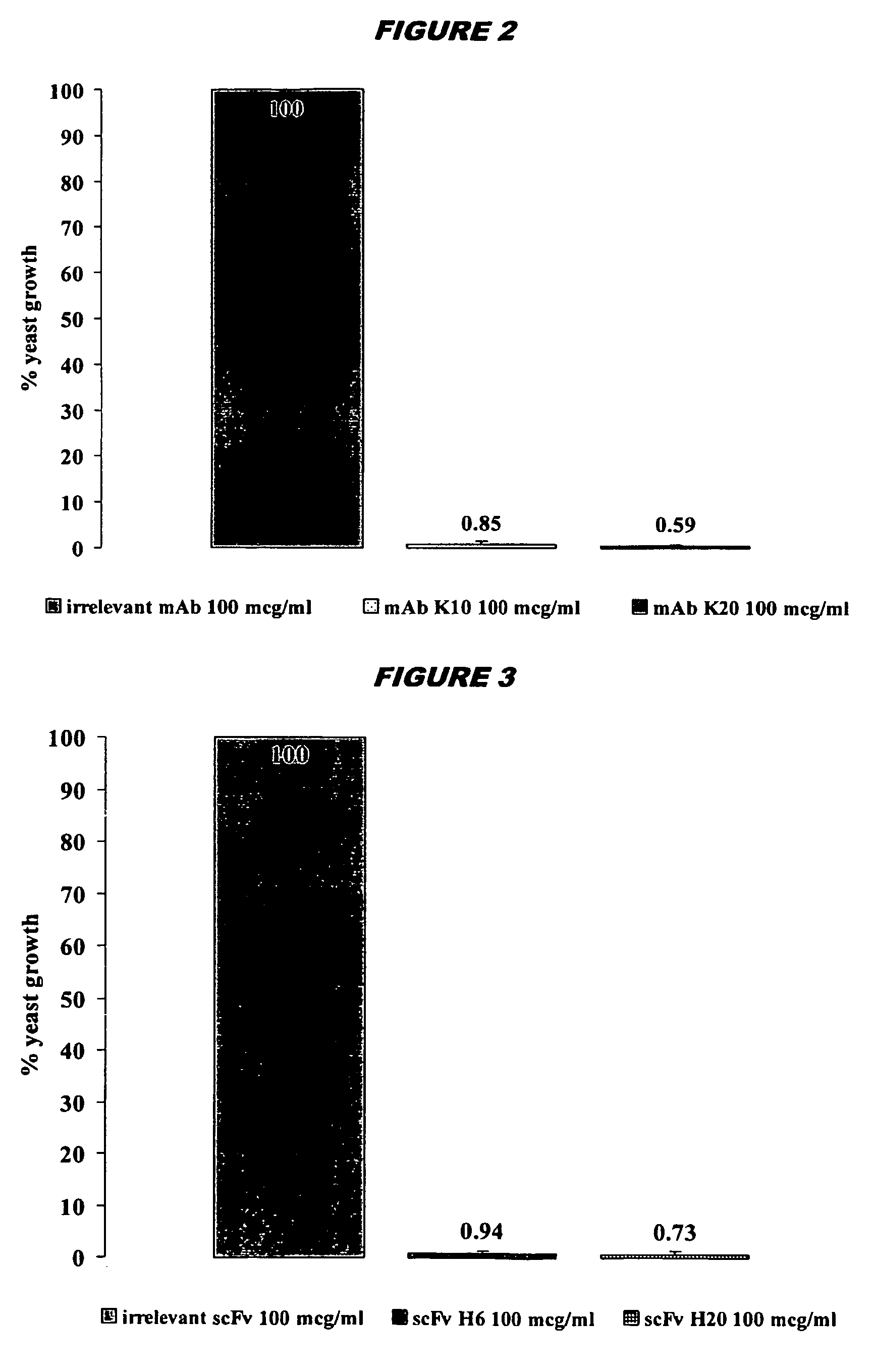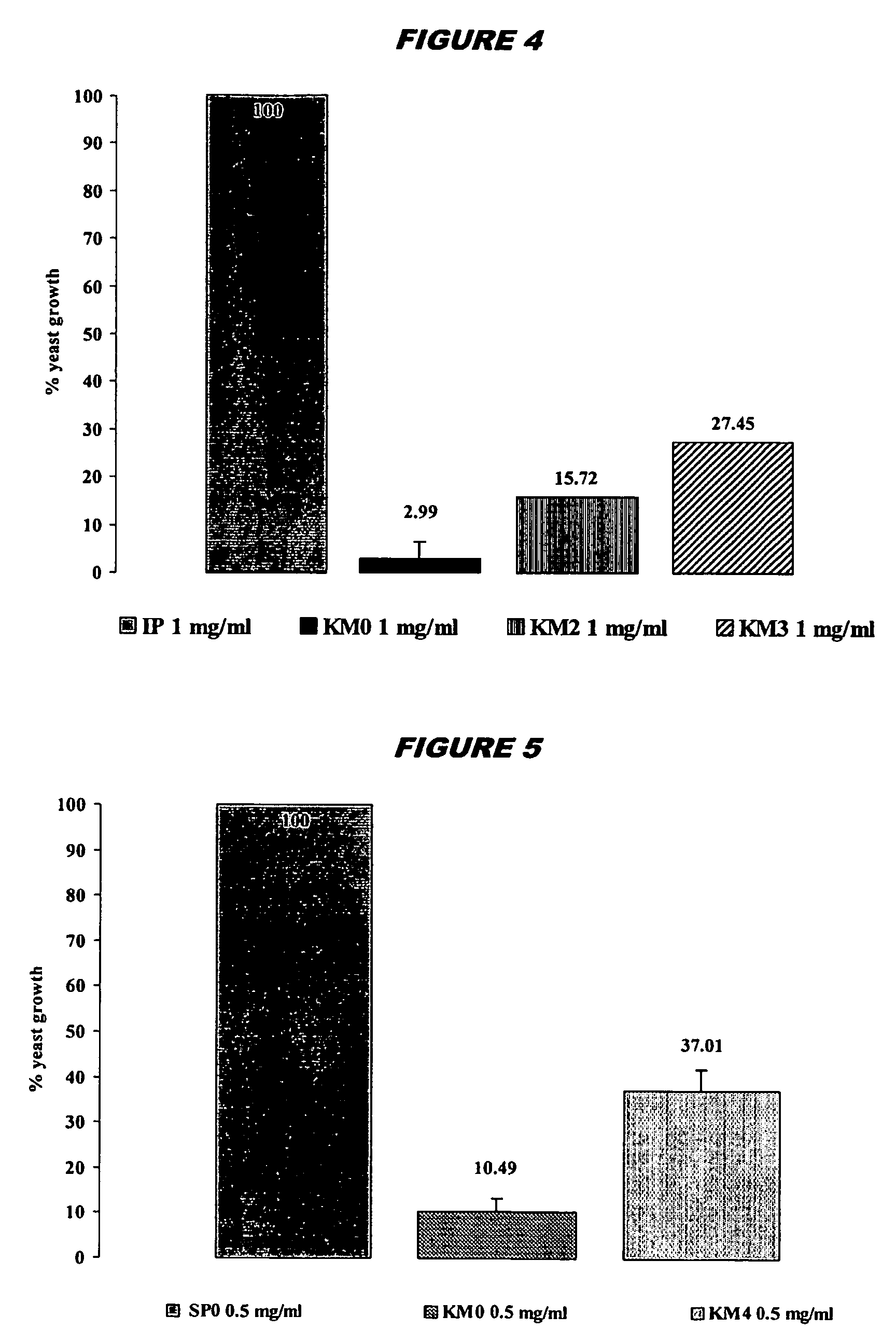Toxin-related antibodies with antimicrobial and antiviral activity
a technology of antimicrobial and antiviral activity, applied in the field of microorganismicides and antivirals, can solve problems such as no practical use, and achieve the effect of convenient isolation and purification of recombinant proteins and efficient harvesting
- Summary
- Abstract
- Description
- Claims
- Application Information
AI Technical Summary
Benefits of technology
Problems solved by technology
Method used
Image
Examples
Embodiment Construction
H6 Single-chain Fv Antibody
[0196]H6 is a single-chain Fv raised against the idiotope of the KT4 monoclonal antibody. It is an anti-idiotypic antibody raised with the purpose of mimicking the activity of the Pichia anomala killer toxin (PaKT).
[0197]The existence of scFv H6 has previously been reported [e.g. ref. 13], but a method for its manufacture has not previously been disclosed, nor has its amino acid sequence. The sequence of H6 is now disclosed (SEQ IDs 1 and 2). Within SEQ ID 2, amino acids 107-132 (GT . . . IE) are a linker and the final 13 amino acids (GA . . . PR; SEQ ID 59) are the ‘E-tag’ inserted by the Recombinant Phage Antibody System (Pharmacia Biotech™) used to create the scFv.
[0198]The CDRs within H6 are as follows:
[0199]
CDRaaSEQ IDH133-3760H252-6561H3 98-10162L1153-16263L2178-18464L3217-22465
[0200]The H6 scFv has strong microbicidal effects in vitro against important pathogenic microorganisms including: C.albicans; C.krusei and C. glabrata (including fluconazole-r...
PUM
| Property | Measurement | Unit |
|---|---|---|
| pH | aaaaa | aaaaa |
| pH | aaaaa | aaaaa |
| pH | aaaaa | aaaaa |
Abstract
Description
Claims
Application Information
 Login to View More
Login to View More - R&D
- Intellectual Property
- Life Sciences
- Materials
- Tech Scout
- Unparalleled Data Quality
- Higher Quality Content
- 60% Fewer Hallucinations
Browse by: Latest US Patents, China's latest patents, Technical Efficacy Thesaurus, Application Domain, Technology Topic, Popular Technical Reports.
© 2025 PatSnap. All rights reserved.Legal|Privacy policy|Modern Slavery Act Transparency Statement|Sitemap|About US| Contact US: help@patsnap.com



